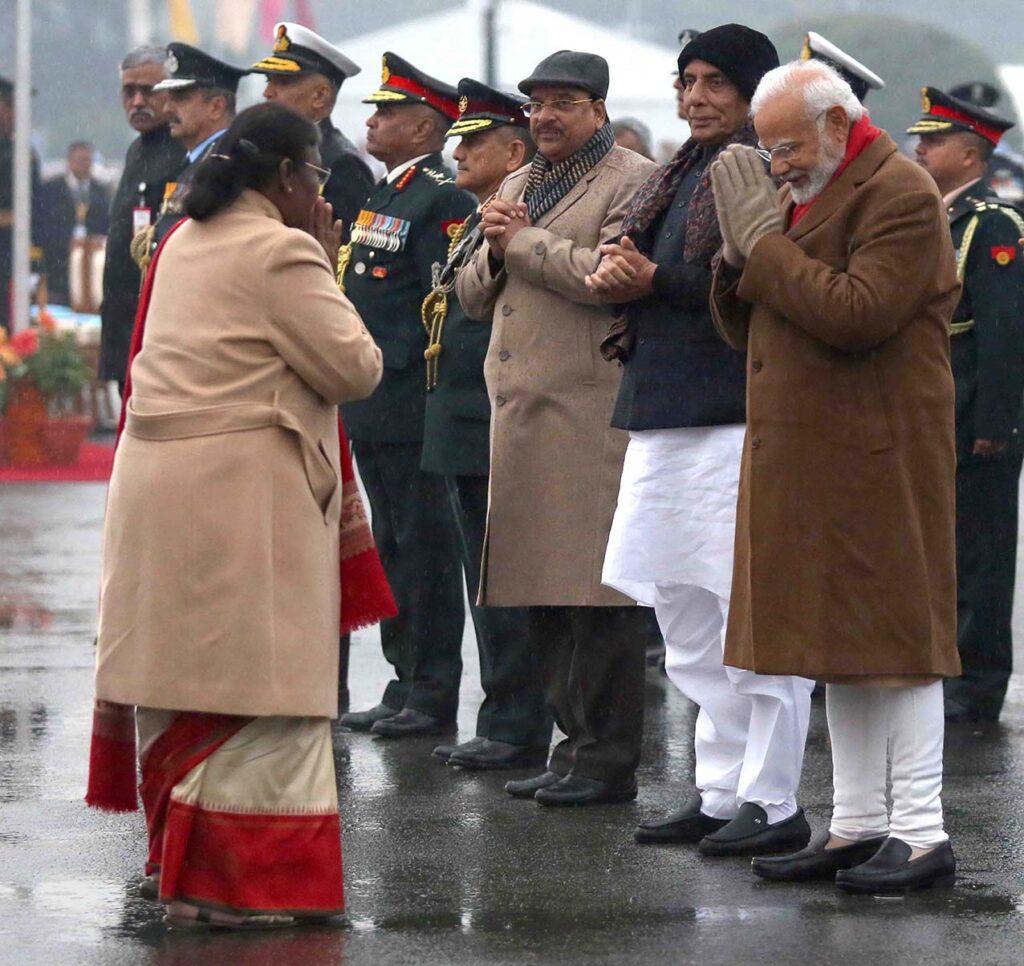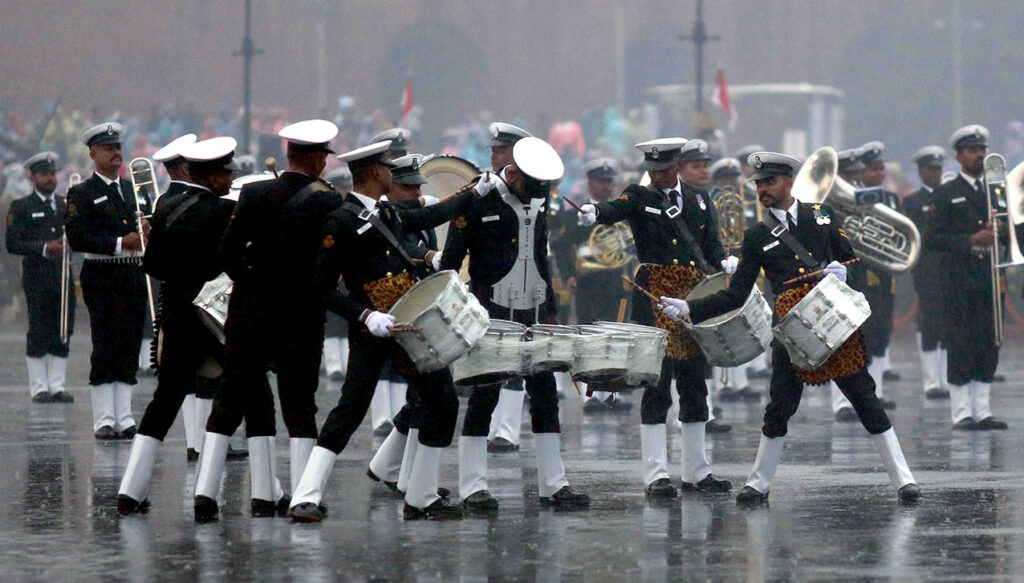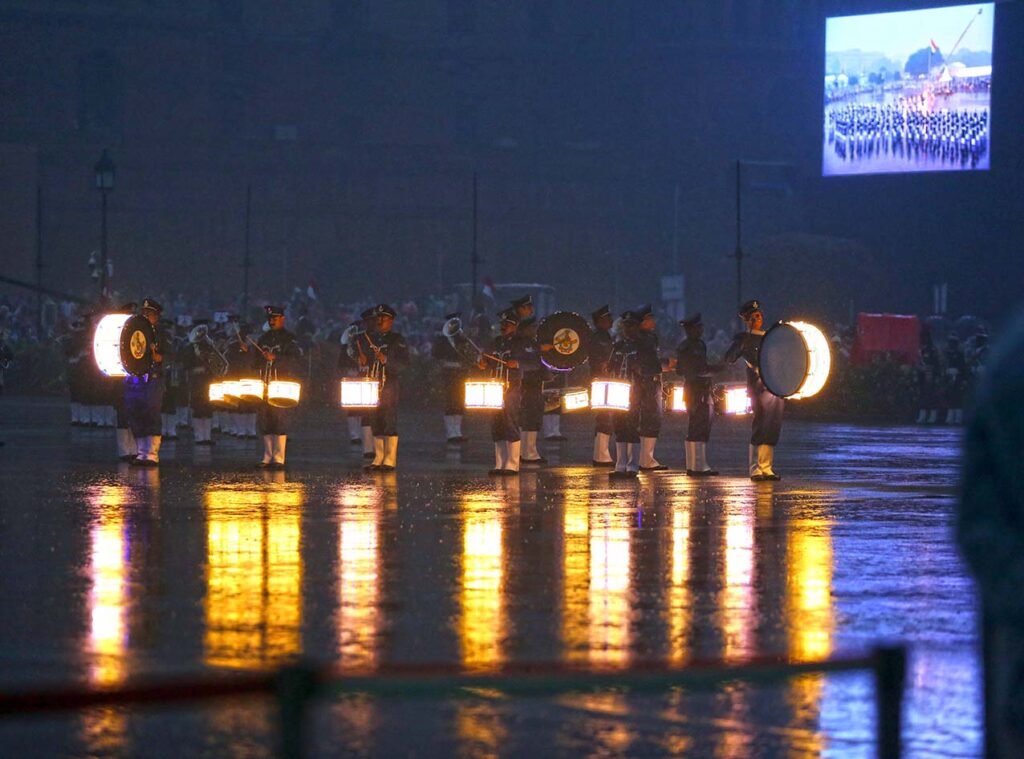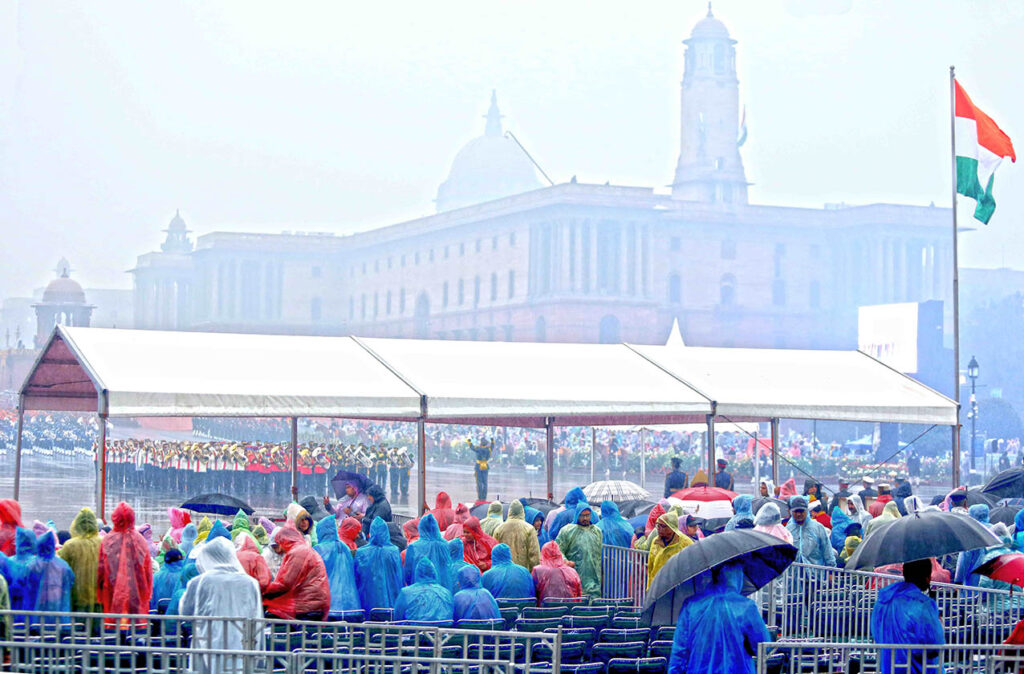Scintillating music rouses the spirits at Beating Retreat Ceremony despite rain

New Delhi. Rousing music has been at the heart of the uniformed forces for centuries, serving to keep up the morale, maintain esprit de corps and discipline and as a reminder that service comes before self.
And so it was on a rainy January 29 evening at the Beating Retreat ceremony – that brought the curtains down on the Republic Day celebrations – which was graced by President Droupadi Murmu, the Supreme Commander of the Armed Forces, at the historic Vijay Chowk in the heart of New Delhi.
However, what was planned to be India’s biggest drone show comprising 3,500 indigenous drones depicting various aspects of the country’s development over the years and a 3-D anamorphic projection on the North and South Blocks that flank the Rashtrapati Bhawan Presidential Palace had to be cancelled due to the inclement weather.

The event began with the arrival in state of President Murmu to be received by Prime Minister Narendra Modi, Defence Minister Rajnath Singh, the Chief of Defence Staff, and the three service chiefs.
The National Salute was presented, the National Anthem was played and the National Flag was unfurled.
Thereafter the massed bands set the tone with “Kadam Kadam Badare Ja” that was the regimental quick march of Netaji Subhas Chandra Bose’s Indian National Army, followed by 29 captivating and foot-tapping Indian tunes, many of them based on Indian Classical Ragas, that were played by the music bands of the Army, the Navy, the Air Force and the State Police and Central Armed Police Force (CAPF).

The entry of the massed bands was followed by the enthralling tunes like ‘Almora’, ‘Kedar Nath, ‘Sangam Dur’, ‘Queen of Satpura’, ‘Bhagirathi’, ‘Konkan Sundari’ by the Pipes and Drums band.
The Indian Air Force band played ‘Aprajey Arjun’, ‘Charkha’, ‘Vayu Shakti’, ‘Swadeshi’, while the fascinating ‘Ekla Cholo Re’, ‘Hum Taiyyar Hai’, and ‘Jai Bharati’ were played by the band of Indian Navy.
The Indian Army’s band played ‘Shankhnaad’, ‘Sher-e-Jawan’, ‘Bhupal’, ‘Agranee Bharat’, ‘Young India’, ‘Kadam Kadam Badhaye Ja’, ‘Drummers Call’, and ‘Ae Mere Watan Ke Logon’.

The event will come to a close with the ever-popular of ‘Sare Jahan se Acha’ as the massed bands marched up Raisina Hill.
The principal conductor of the ceremony was Flight Lieutenant Leimapokpam Rupachandra Singh. While the Army Band was led by Sub Maj Diggar Singh, the Naval and Air Force band commanders were MCPO M Anthoni Raj and Warrant Officer Ashok Kumar. The conductor of the State Police and CAPF bands was Asstt Sub Inspector Prem Singh.
The buglers performed under the leadership of Naib Subedar Santosh Kumar Pandey, and pipes and drums band played under the instructions of Subedar Major Baswaraj Vagge.

The Beating Retreat ceremony has emerged as an event of national pride when the Colours and Standards are paraded.
The ceremony traces its origins to the early 1950s when Major Roberts of the Indian Army indigenously developed the unique ceremony of display by the massed bands. It marks a centuries old military tradition, when the troops ceased fighting, sheathed their arms and withdrew from the battlefield and returned to the camps at sunset at the sounding of the Retreat. Colours and Standards are cased and flags lowered. The ceremony creates nostalgia for the times gone by.
Much has changed in the ceremony over the years. In the initial years, Beating Retreat comprised only Western marches that were replaced over time with Indian compositions that have now taken centre stage.





